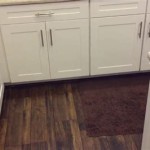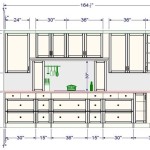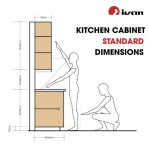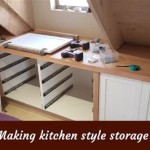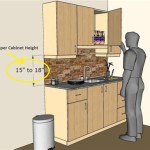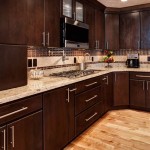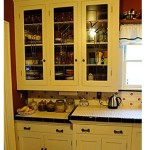Essential Aspects of Under Kitchen Cabinet Design
Under kitchen cabinets play a crucial role in optimizing kitchen functionality and aesthetics. Their design encompasses various essential aspects that impact usability, storage capacity, and overall appearance. This article delves into the key considerations when designing under kitchen cabinets to ensure a well-designed and efficient kitchen space.
1. Height and Depth: The height and depth of the cabinets determine the amount of storage and accessibility. Standard heights range from 24 to 36 inches, while depths can vary from 12 to 24 inches. Adjustable shelves allow for flexibility in accommodating different items.
2. Style and Materials: The style of the cabinets should complement the overall kitchen design. Shaker-style cabinets offer a classic look, while modern designs with sleek lines and handleless fronts can create a contemporary aesthetic. Materials include wood, laminate, and thermofoil, each with varying durability and cost.
3. Functionality: Under kitchen cabinets should prioritize functionality by maximizing storage capacity and accessibility. Pull-out drawers provide easy access to items stored at the back, while lazy Susans utilize corner space effectively. Adding dividers and organizers keeps items neat and tidy.
4. Hardware and Accessories: Handles and knobs not only provide functionality but also enhance the visual appeal. Choose hardware that complements the cabinet style and is durable for everyday use. Other accessories like under-cabinet lighting and spice racks improve convenience and organization.
5. Space Planning: Proper space planning is crucial to avoid overcrowding and maximize efficiency. Measure the available space carefully and plan the cabinet layout to accommodate appliances, storage needs, and work zones. Vertical storage solutions like tall pantries or pull-out shelves can optimize space.
6. Lighting: Under-cabinet lighting enhances visibility and creates a more inviting atmosphere. LED strip lights or puck lights provide ample illumination for task areas. Placement and intensity should be considered to avoid glare or shadows.
7. Accessibility: Under kitchen cabinets should be easily accessible, especially for individuals with limited mobility. Consider pull-out shelves, adjustable heights, and kneeling drawers to ensure ergonomic use. Height adjustability is particularly beneficial for wheelchair users.
By carefully considering these essential aspects of under kitchen cabinet design, homeowners can create well-functioning and aesthetically pleasing spaces that meet their specific needs and preferences.

15 Stunning Kitchen Cabinet Designs In Singapore With 5 Essential Tips

Kitchen Sink Cabinet Organization Ideas And Solutions Modern Glam

Kitchen Wardrobe Cabinet Ideas For Your Home Designcafe

Kitchen Under Stairs Design For Your Home Designcafe

Why Under Cabinet Kitchen Lights Are A Bright Addition To Your Home

35 Kitchen Cabinet Designs That Will Blow Your Mind

Building Open Shelving Below Existing Cabinets Kitchen Renovation Diy New

Kitchen Under Stairs Design For Your Home Designcafe

17 Ways To Organise Your Under Sink Kitchen Cabinet Houzz Ie

35 Best Kitchen Cabinet Ideas Beautiful Design
Related Posts

